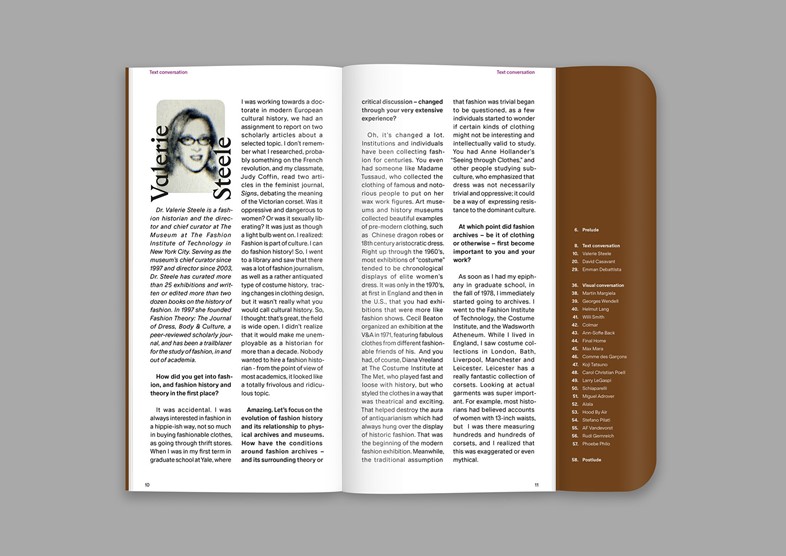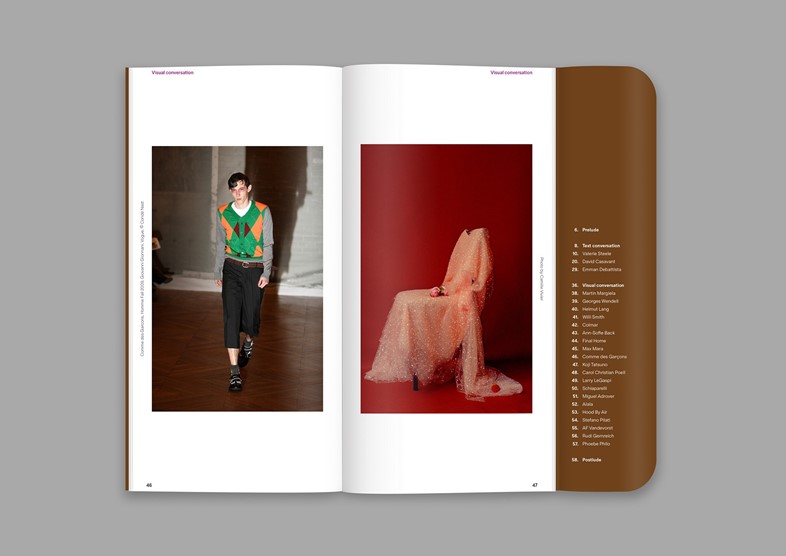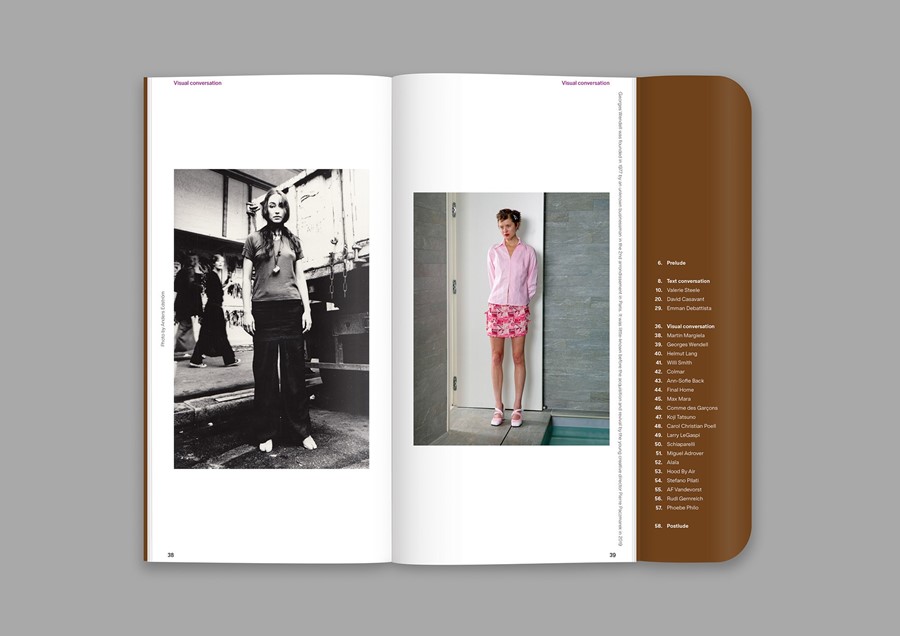Elise By Olsen shares an excerpt from the tenth – and final – issue of Wallet: a conversation with the fashion historian and director the Museum at the Fashion Institute of Technology, Dr Valerie Steele
This excerpt is taken from the tenth issue of Wallet:
Dr Valerie Steele is a fashion historian and the director and chief curator at the Museum at the Fashion Institute of Technology in New York City. Serving as the museum’s chief curator since 1997 and its director since 2003, Dr Steele has curated more than 25 exhibitions and written or edited more than two dozen books on the history of fashion. In 1997, she founded Fashion Theory: The Journal of Dress, Body & Culture, a peer-reviewed scholarly journal, and is a trailblazer for the study of fashion, in and out of academia.
Elise By Olsen: How did you get into fashion, and fashion history and theory, in the first place?
Valerie Steele: It was accidental. I was always interested in fashion in a hippie-ish way, not so much in buying fashionable clothes, as going through thrift stores. When I was in my first term in graduate school at Yale, where I was working towards a doctorate in modern European cultural history, we had an assignment to report on two scholarly articles about a selected topic. I don’t remember what I researched, probably something on the French revolution, and my classmate, Judy Coffin, read two articles in the feminist journal, Signs, debating the meaning of the Victorian corset. Was it oppressive and dangerous to women? Or was it sexually liberating? It was just as though a light bulb went on. I realised: fashion is part of culture. I can do fashion history! So, I went to a library and saw that there was a lot of fashion journalism, as well as a rather antiquated type of costume history, tracing changes in clothing design, but it wasn’t really what you would call cultural history. So, I thought: that’s great, the field is wide open. I didn’t realise that it would make me unemployable as a historian for more than a decade. Nobody wanted to hire a fashion historian – from the point of view of most academics, it looked like a totally frivolous and ridiculous topic.
EBO: Amazing. Let’s focus on the evolution of fashion history and its relationship to physical archives and museums. How have the conditions around fashion archives – and its surrounding theory or critical discussion – changed through your very extensive experience?
VS: Oh, it’s changed a lot. Institutions and individuals have been collecting fashion for centuries. You even had someone like Madame Tussauds, who collected the clothing of famous and notorious people to put on her wax-work figures. Art museums and history museums collected beautiful examples of pre-modern clothing, such as Chinese dragon robes or 18th-century aristocratic dress. Right up through the 1960s, most exhibitions of “costume” tended to be chronological displays of elite women’s dress. It was only in the 1970s, at first in England and then in the US, that you had exhibitions that were more like fashion shows. Cecil Beaton organised an exhibition at the V&A in 1971, featuring fabulous clothes from different fashionable friends of his. And you had, of course, Diana Vreeland at the Costume Institute at the Met, who played fast and loose with history, but who styled the clothes in a way that was theatrical and exciting. That helped destroy the aura of antiquarianism which had always hung over the display of historic fashion. That was the beginning of the modern fashion exhibition. Meanwhile, the traditional assumption that fashion was trivial began to be questioned, as a few individuals started to wonder if certain kinds of clothing might not be interesting and intellectually valid to study. You had Anne Hollander’s Seeing Through Clothes, and other people studying subculture, who emphasised that dress was not necessarily trivial and oppressive; it could be a way of expressing resistance to the dominant culture.

EBO: At which point did fashion archives – be it of clothing or otherwise – first become important to you and your work?
VS: As soon as I had my epiphany in graduate school, in the fall of 1978, I immediately started going to archives. I went to the Fashion Institute of Technology, the Costume Institute, and the Wadsworth Atheneum. While I lived in England, I saw costume collections in London, Bath, Liverpool, Manchester and Leicester. Leicester has a really fantastic collection of corsets. Looking at actual garments was super important. For example, most historians had believed accounts of women with 13-inch waists, but I was there measuring hundreds and hundreds of corsets, and I realised that this was exaggerated or even mythical.
EBO: You have served as the director of the Museum at FIT since 2003. What does this job entail?
VS: To be a museum director means building a collection and building a team. Both are equally important. A Kunsthalle puts on exhibitions without having its own collection, but if you have a collection, it’s much easier to develop thoughtful and well-researched exhibitions. Fortunately my predecessors, such as Robert Riley and Richard Martin, built an excellent collection. My most urgent task was to bring in young, talented museum professionals as curators, educators, conservators, registrars, media and exhibition specialists. With a great team, we could produce books and symposia and lecture series, as well as continuing to put on four fashion exhibitions a year, plus we assist the graduate school at FIT and show the students how to put on a fashion exhibition.

EBO: How involved are you in building the museum’s permanent collection now?
VS: Very much so. Because we have a limited amount of space and money, we have to be careful about what we collect. Many of our acquisitions are intended for upcoming exhibitions, but we’re also looking for objects that we’ll be exhibiting repeatedly, because they are important to the history of fashion. We don’t only collect couture and designer ready-to-wear, we are also interested in street style and subcultural styles. We did an exhibition on gothic fashion and goth subcultural style, and we have a hip hop show coming up. We’re also increasingly engaged in collecting clothes that were designed or worn by Black and Indigenous people, and people of colour. The Museum at FIT has been collecting clothes by Black designers for decades, so we have a good archive. Like most museums, we have many more women’s clothes than men’s clothes, but we do have thousands of men’s garments and accessories too. What we’re looking for is directional fashion – the clothes that move fashion forward and inspire other designers. We don’t do many single designer retrospectives, because these tend to be hagiographical, we prefer thematic shows. Our recent exhibition on the colour pink explored how pink is not just a colour for sweet, little girls, but is in fact associated with rebellion, Act Up, the LGBTQ+ community, with popular music – from punk to rap, and with different cultures from east Asia to Latin America and the African diaspora.
EBO: Can you elaborate on the archiving practices of FIT – strategies, policies, and of course its history? As the collection serves as a device for making exhibitions, does it have other purposes as well?
VS: I’ll start with answering the last question, because I think that exhibitions should be a venue both for inspiration and education, and not just didactic education, but lifelong learning and critical thinking. So, we definitely want to collect dresses that will be good for thinking. In addition to our permanent collection, which we conserve primarily for research and exhibition, we have a separate study collection that is used in literally hundreds of classes a year. Teachers can pull out a particular dress, put it down on a table, and turn it inside out, so students can see how it’s constructed. We work with the FIT faculty to create special racks, some that are fashion history, and others that address themes like surface decoration or tailoring. Of course, students also visit our exhibitions where they can see hundreds more garments on display. You always see students sketching in our galleries.
EBO: What are your priorities when building the collection and making it available through various curatorial or editorial activities?
VS: Working with the collection is fascinating because it is collaborative work. The curator is like a director on a film or a professor in a classroom, coming up with the idea for the show, and the way to tell the story. But curators need to work with conservators who are the ones who try to figure out how to dress the clothes in a way that is safe, historically accurate, and visually compelling. If a dress is super fragile, maybe it can’t be mounted on a mannequin, maybe it has to lie down. The exhibition design team creates a setting within which the clothes and accessories are displayed. When I saw Judith Clark’s exhibition, Malign Muses in Antwerp, I came back and called a meeting of the museum staff, saying “This is a new paradigm.” Beginning with my show, Gothic: Dark Glamour, we created mise-en-scènes, almost like movie sets. I wanted to show that fashion designers working in a gothic mode were not just copying goth kids – because that was the stereotype, that the fashion designers just copied a subcultural style. Designers like Alexander McQueen, Olivier Theyskens, and Rick Owens who were working in gothic style, were not copying the kids. Rather, they were inspired by the same kind of visual source material, like vampire films. Simon Costin was the art director, and together with him, we created multiple sets: a graveyard with people in mourning, another vignette featuring a coffin out of which arose a mannequin in a vampy Mugler dress, a laboratory where scientists create fashion monsters, and a ruined gothic castle. So many goth kids visited me that when a black-clad young person came to the front desk, the guard would just say: “It’s on the third floor!”
The tenth and final issue of Wallet is out now.
